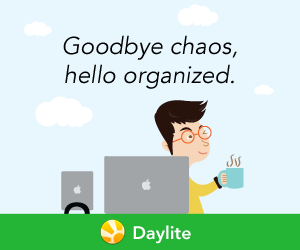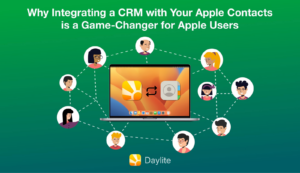For many small businesses in the early growth stage, a spreadsheet is ideal for managing clients and leads. It’s free, customizable, and there’s no training required. But as you grow, relying on spreadsheets can become chaotic.

Spreadsheets don’t help you keep track of every detail mentioned in an email, meeting, or over a call. You start missing important info, digging through files and emails to look for things, and have to pass around updated spreadsheets and cc people on email chains.
While spreadsheets may have helped you at first to feel organized and confident in managing your clients and leads, as you grow and get more leads and a heavier workload, spreadsheets start to feel chaotic and just aren’t cutting it.
Do these 8 problems sound familiar? If so, you’ve outgrown the spreadsheet and it’s time to invest in a CRM to take your business to the next level.
8 Signs You’ve Outgrown The Spreadsheet
You’re dropping the ball on following up
At first a spreadsheet was helpful to keep track of who you need to follow up with. But when your client list grows, it becomes more difficult to keep track of who to follow up with and when. Without a reminder for each client on the day you need to follow up with them, you start dropping the ball and feel overwhelmed.
Sound familiar? It could be time for a CRM.
You’re losing sight of the status of each lead or customer
Spreadsheets don’t provide a visual cue for where your leads or customers are in the sales cycle. You want to know where you stand with each deal but it’s hard to piece together the full picture. And if a customer calls and is handled by someone else in your company, you’re not aware of what was discussed. You’re having to ask each other when they last spoke to a client and passing around updated spreadsheets is becoming a real pain. Shared iCloud docs help but then you’re not able to update them at the same time and you risk overwriting customer info.
Having this problem? Getting a CRM can solve this.
Creating reports is painful & time consuming
You’re manually creating reports to figure out how your sales are doing and how well you’re converting customers. You’re having to manually figure out how much time it’s taking to convert leads. You don’t have a clear understanding of why some leads aren’t converting or where they’re getting stuck in the funnel because you don’t have a proper sales funnel to track the progress.
It’s becoming difficult to reach your targets because you don’t have the answers you need to understand why some things are working or not. You need an easier way to report on your leads and customers and a spreadsheet just isn’t cutting it.
Feeling this pain? It’s probably time to get a CRM.
Not able to segment customers
You want to be able to segment your customers by product/service they’re interested in for targeted email campaigns. Or be able to prioritize your customers by sales value, but you’re not able to easily do this with a spreadsheet. You need a better way of grouping and filtering your customer list so you can achieve better results from a more targeted effort. This means creating multiple different spreadsheets, which just leads to more frustration in managing all these different lists.
Want a better way to segment leads and customers? Get a CRM.
CC’d emails are getting out of control
Your team is having to cc each other on email threads to keep people updated and make sure everyone’s on the same page. But the amount of cc’ed emails this creates makes it near impossible to get ahead. With so many cc’ed emails, you and your team are spending way too much time in your inbox and still are losing track of important details.
Feeling overwhelmed by cc’ed emails? Time for a CRM.
Losing track of important customer history
Spreadsheets work for keeping track of email addresses, phone numbers, and short notes about customers. But there aren’t enough columns to keep track of all the important communication. You have to flip between email folders to pull out important details, or rely on sticky notes. You’re losing track of important customer history from communication with customer over the phone, in meetings, and through email.
If you want to capture all the important customer history, you need to ditch the spreadsheet and get a CRM.
Wasting time and missing out on sales
Your team is spending so much time doing “busy work” that they’re not able to go after new leads or keep in touch with as many customers. They’re digging through email folders, files, looking through handwritten and sticky notes, or interrupting each other to figure out when someone last spoke to a client.
You’re losing track of leads. Customers or prospects you spoke to 6 months ago or longer are forgotten about and never followed up with. All this wasted time is adding more stress and frustration and is making it difficult to get ahead.
Are you and your team missing out on sales? Time for a CRM.
Lack a solution that’s scalable
Your current process is working enough, but it’s not making it possible to increase the load of leads and customers. In order to handle more customers you’d need to hire more people but you don’t have the budget. You need a way to manage more leads and customers with your existing resources in a way that’s scalable as you grow.
If you want a scalable solution to help your small business grow, you need a CRM.
Investing in the right CRM
By investing in the right CRM for your small business, you’ll help your team increase your sales productivity while reducing stress and frustration. The right CRM will help your team capture important communication with prospects and leads, track leads, share information, and segment clients for targeted campaigns that will help convert more leads. A CRM will also help you to report on your leads and customers so you can make more informed decisions and grow your business.
Read how these small businesses overcame their spreadsheet and email problem with Daylite:
typeneun – Graphic design studio in Freising, Germany.
Mortgage Alliance West – Mortgage Broker in Vancouver, Canada.



